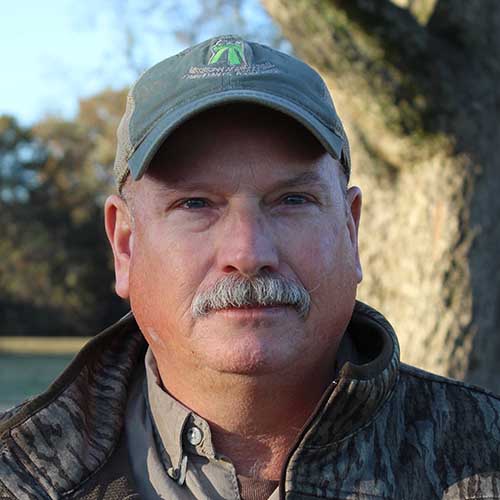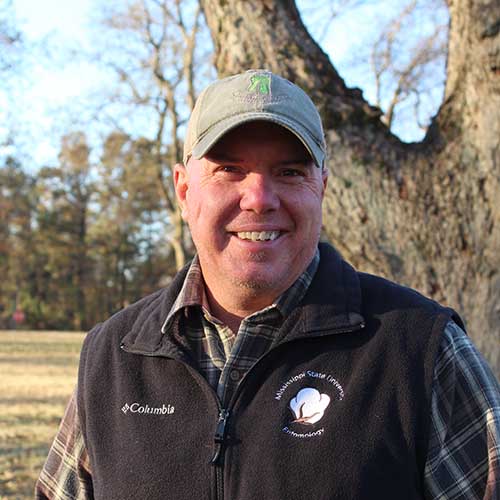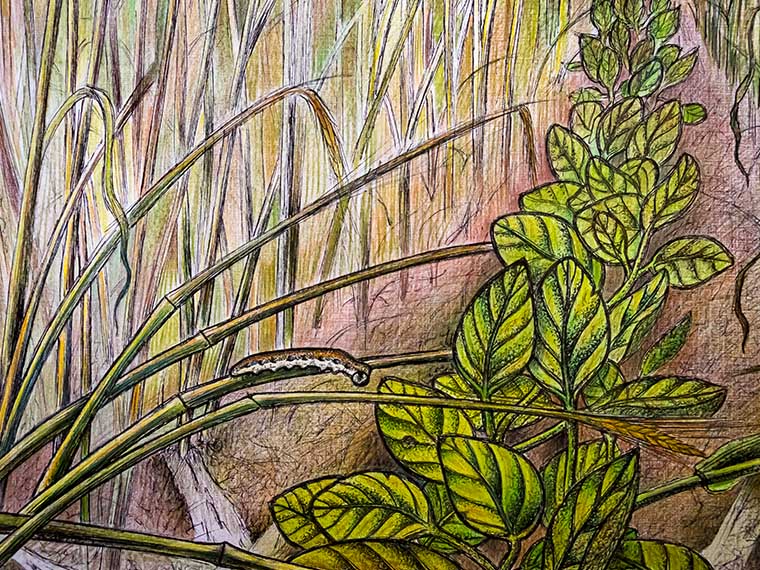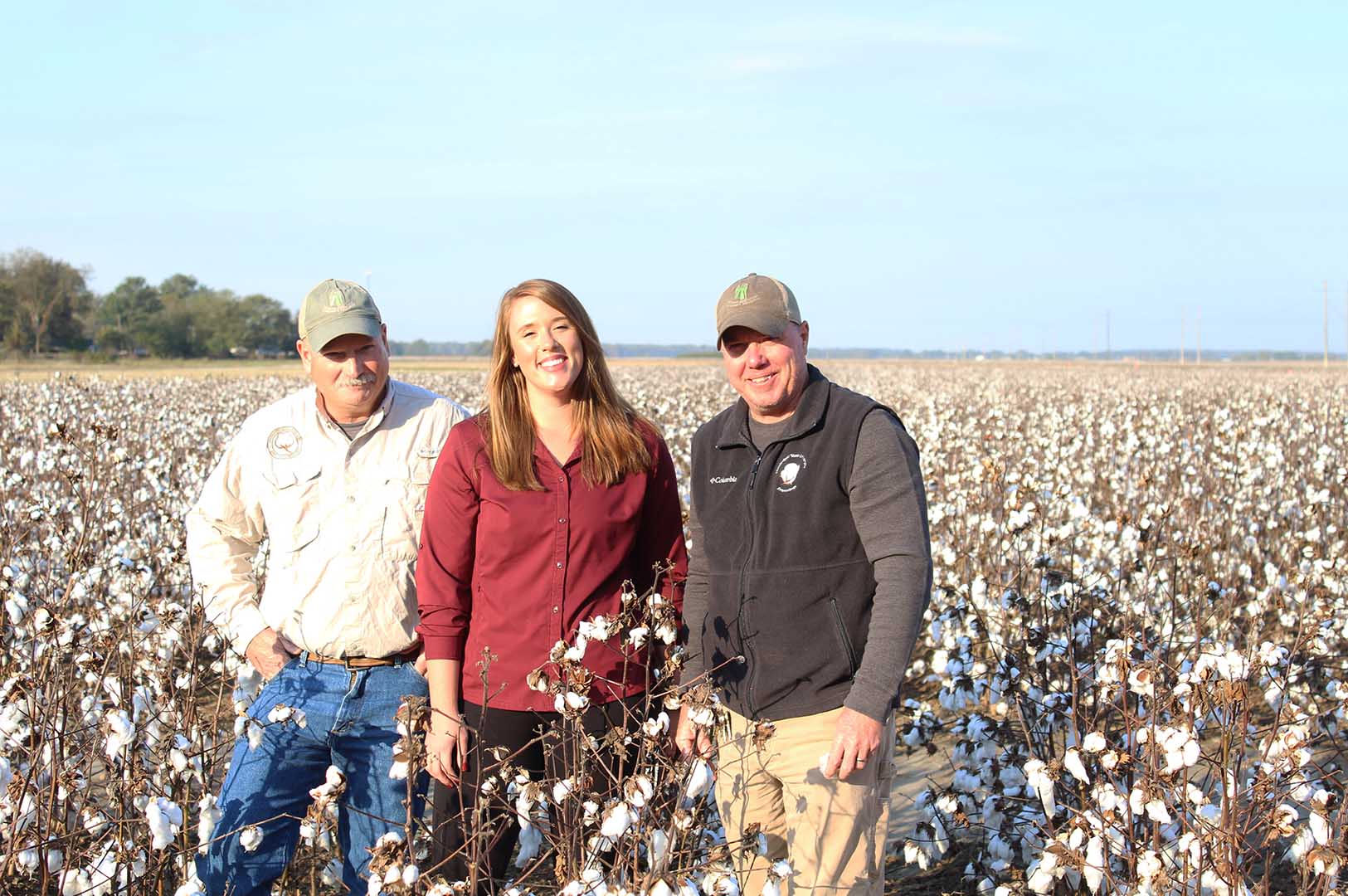Disrupting the Green Bridge
MAFES entomologists investigate insect pressure in cover crops
By: Kenner Patton
The information presented on this page may be dated. It may refer to situations which have changed or people who are no longer affiliated with the university. It is archived as part of Mississippi State University's history.
As cover crops gain in popularity, entomologists are concerned about insects that overwinter and migrate along the green bridge, moving from cover crop to cash crop.
A cover crop system that is still green at spring planting can act as a host plant until the cash crop germinates and sprouts. This allows for a slow migration on the "green bridge" from one plant to the next. This, combined with all the unknowns in insect pest management, concern entomologists.
"Regardless of the commodity, cover crops present challenges with insects because they harbor over-wintering populations of both good and bad insects," said Dr. Jeff Gore, an entomology research professor at the Delta Research and Extension Center in Stoneville. "In our environment, there might be some beneficial insects that survive the winter. But usually, the harmful insect populations outweigh the good, especially with the extraordinary level of insects that survive the South's relatively mild winters."
To make matters more complicated, there are two types of insects in cover crops. Some insects are below the soil surface and are part of the soil insect complex, while others are above ground as foliage feeders.
Gore, along with other MAFES scientists, Extension specialists, and graduate students, set out to determine the influence of winter annual cover crops and insect management strategies on pests in Mississippi soybeans. Dr. Adam Whalen, a recent entomology graduate conducted the research as part of his Ph.D. dissertation under the direction of Gore and Dr. Angus Catchot, an extension professor.
Funded by the Mississippi Soybean Promotion Board, the project sought to determine how cover crops influence insect populations in soybean, investigate the use of various chemical control options, and to determine the best timing for cover crop termination.
Several experiments were conducted at the R.R. Foil Plant Science Research Center (North Farm) and at the Delta Research and Extension Center. Cover crops planted in October included Austrian winter pea, hairy vetch, tillage radish, triticale, winter wheat, blends of cover crops, and unplanted native winter weeds. At approximately four weeks prior to soybean planting, a burndown application was used to kill the cover crops and natural winter vegetation.
Soybean treatments included fungicide only, a foliar insecticide application applied with the burndown herbicide, and neonicotinoid seed treatments. Soybean plots were scouted at differing stages for above ground insect pests including pea leaf weevil, three cornered alfalfa hopper, and bean leaf beetle. Additionally, pitfall traps were placed in plots in an attempt to measure pests below soil surface.
The "Green Bridge" phenomenon did not occur in the studies, suggesting that neonicotinoid seed treatments and early termination of the cover crop were sufficient to control insect pests. However, in another study at DREC where burndown was delayed until the time of planting, pea leaf weevil infestations reduced untreated soybean yields up to 81 percent following a vetch cover crop.
The researchers did find that more above-ground insect pests followed Austrian winter pea and hairy vetch than other cover crops in the study. Pest infestations below the soil are not as easy to measure.
"Natural control is unlikely to manage an existing soil insect infestation," said Dr. Don Cook, MAFES assistant entomology research professor. "This means when the cover crop is terminated before the planting season, all of those pests will still be there. Insects that cause the most concern are wireworms, rootworms, and white grubs. Cutworms are a hybrid because they spend their daylight hours in the soil, but migrate above the ground to feed on plants at night. But they can be of significant concern, too. And if that's not challenging enough, there are generally no major predators or parasitoids that attack these sub-surface insects to prevent them from becoming a problem. These parasites aren't at adequate levels to manage existing insect infestations."
While there were no deleterious effects from cover crops among insect species in this study, entomologists caution that cover crop research is in its infancy.
"While there are potential benefits to cover crops from an agronomic standpoint, nothing in life is free. Growers need to be aware that they're not going to be able to manage this year in and year out like they have when they do burndown in February or March or plant into clean fields. There's going to be some additional management required," Cook said. "Insect pressures across the state vary depending on factors such as region, weather patterns, and crop history. Although using some of the cover crop practices can increase the levels of pest pressures, or increase the severity of the problem, it doesn't necessarily guarantee them."
The bottom line, like any other practice in a farming operation, cover crops should be evaluated appropriately to be part of the overall cost-to-benefit models.
"Our number one recommendation is to use insecticides when planting, especially in any crop following a cover crop. We recommend seed treatments or in-furrow applications when planting into a cover crop, regardless if the farmer is planting into a green or terminated cover crop. This step is critical," Gore said. "One important point to remember is that the use of an insecticide is rarely a 'silver bullet.' As a result, an integrated approach to insect management including termination or destruction of the cover crop by herbicides or tillage within at least three weeks before planting the cash crop is critical."
Gore added that farmers should also be mindful of the type of cover crop used, pointing out that cover crops of Austrian winter pea and hairy vetch yielded more insect pests in the field studies.
Dr. Whitney Crow, assistant professor and entomologist, echoed Gore's sentiments.
"If a farmer is going to plant soybean, they don't need to plant a legume cover crop like vetch, Austrian winter pea, or clover. If they do, they are creating an environment that is beneficial to the soil insect pest complex, especially the pea leaf weevil, allowing them to be present before the cash crop is even planted potentially," Crow said. "A good rule of thumb from an insect standpoint is to use a grass cover crop in a broadleaf crop, and use legume cover crops in grass crops."
While there are potential benefits to cover crops from an agronomic standpoint, nothing in life is free. There's going to be some additional [INSECT] management required.
Dr. Don Cook
Behind the Science

Don Cook
Associate Research Professor
Education: B.S., General Agriculture, Northeast Louisiana University; M.S., Agronomy, Ph.D., Entomology, Louisiana State University
Years At MSU: 15
Focus: Management strategies for insect pests of corn, soybeans, cotton, rice, and stored grain
Passion At Work: My goal is to help develop the most economical insect pest management strategies for growers in Mississippi.

Whitney Crow
Assistant Professor
Education: B.S., Crop and Soil Management, University of Tennessee at Martin; M.S., Weed Science, University of Tennessee; Ph.D., Entomology, Mississippi State University
Years At MSU: 1
Focus: Row crop and extension entomology
Passion At Work: To help find solutions to some of the many entomological issues facing row crop agriculture.

Jeffrey Gore
Research Professor
Education: B.S., Entomology/Integrated Pest Management, Auburn University; M.S., Ph.D., Entomology, Louisiana State University
Years At MSU: 12
Focus: Insect pest management in agronomic crops
Passion At Work: Graduate student training and solving real world problems that growers face.


